E-commerce has transformed the way business is done in India. The Indian e-commerce industry has been on an upward growth trajectory. It is the Fastest growing e-commerce market in the world. After a surge in digital adoption during COVID-19, the Indian e-commerce market is estimated to be worth over $55 Bn in Gross Merchandise Value in 2021. By 2030, it is expected to have an annual gross merchandise value of $350 bn.
Further, as of 2021, more than 348 Mn users were conducting online transactions, and nearly 140 Mn were shopping online. Young demography, increasing internet and smartphone penetration, and relatively better economic performance are some key drivers of this sector. With 830 Mn users, India is currently the 2nd largest internet market. Close to 100 per cent of pin codes in India have seen e-commerce adoption. More than 60 per cent of transactions and orders in India come from tier two cities and smaller towns. The e-commerce trend is gaining major popularity even in tier-2 and tier– 3 cities as they now make up nearly half of all shoppers and contribute three of every five orders for leading e-retail platforms. Electronics and apparel make up nearly 70 per cent of the e-commerce market, when evaluated against transaction value. Other new upcoming categories within e-commerce include ed-tech, hyperlocal and food-tech; E-Commerce funding in India grew by ~600% YoY in 2021
The Indian e-commerce market is expected to grow to US$ 188 billion by 2025 from US$ 46.2 billion as of 2020. By 2030, it is expected to reach US$ 350 billion. In 2022, the Indian e-commerce market is predicted to increase by 21.5%, reaching US$ 74.8 billion. India’s e-commerce market is expected to reach US$ 111 billion by 2024 and US$ 200 billion by 2026.
The Indian online grocery market is estimated to reach US$ 26.93billion in 2027 from US$ 3.95 billion in fy21, expanding at a CAGR of 33%. According to Grant Thornton, e-commerce in India is expected to be worth US$ 188 billion by 2025. With a turnover of $50 billion in 2020, India became the eighth-largest market for e-commerce.
The Indian e-commerce market is expected to grow to US$ 200 billion by 2026 from US$ 38.5 billion in 2017. After China and the US, India had the third-largest online shopper base of 140 million in 2020. For the 2021 festive season, Indian e-commerce platforms generated sales worth US$ 9.2 billion gross merchandise value (GMV), a 23% increase from last year’s

Choosing between Online sales and brick-and-mortar stores
The pandemic has changed consumer behaviour forever. People embraced social distancing, they turned to online shopping and online shopping is set to stay.

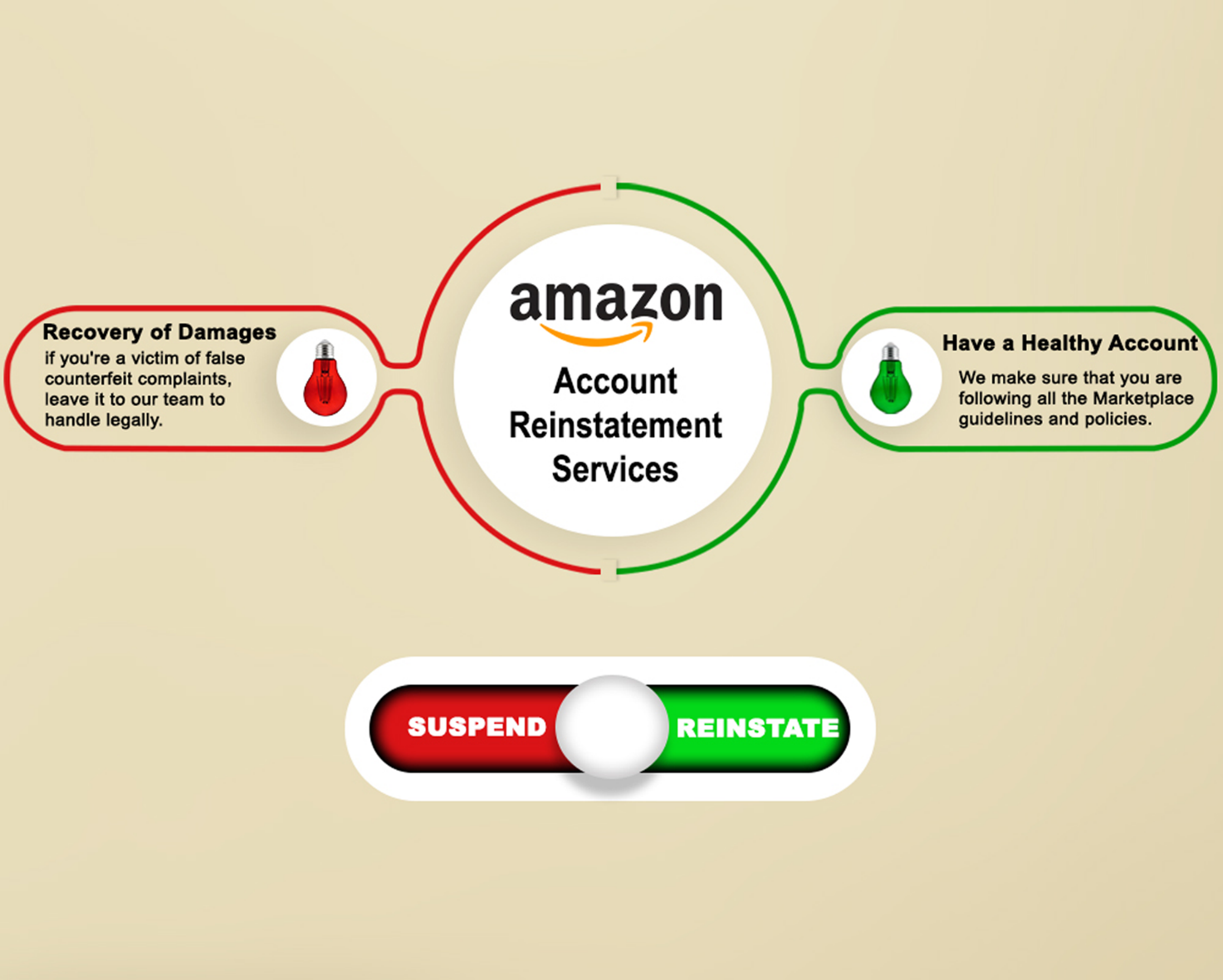
Amazon SEO or Search Engine Optimization means optimizing and improving your product listing to appear on top of Amazon search results. To get more sales in an online marketplace it is important to be visible to customers. Amazon ranking and product visibility can significantly be improved by Amazon SEO.
It’s like when we go to a market there are so many shops from which we need to decide which one to go? Probably we go to the one which is accessible, has showcased products better than others, easier to find what we are looking for and finally we would not want to go thru the hassles of finding more shops.
Similarly in Online shopping, Better the product visibility better are the chances of conversions. Customer searches for a particular product on Amazon and looks for options. Amazon gives thousands of options to them. Customer checks the top search results and goes for products which catch their attention faster.
Advertising brings attention to your product and increases the chances of sales.
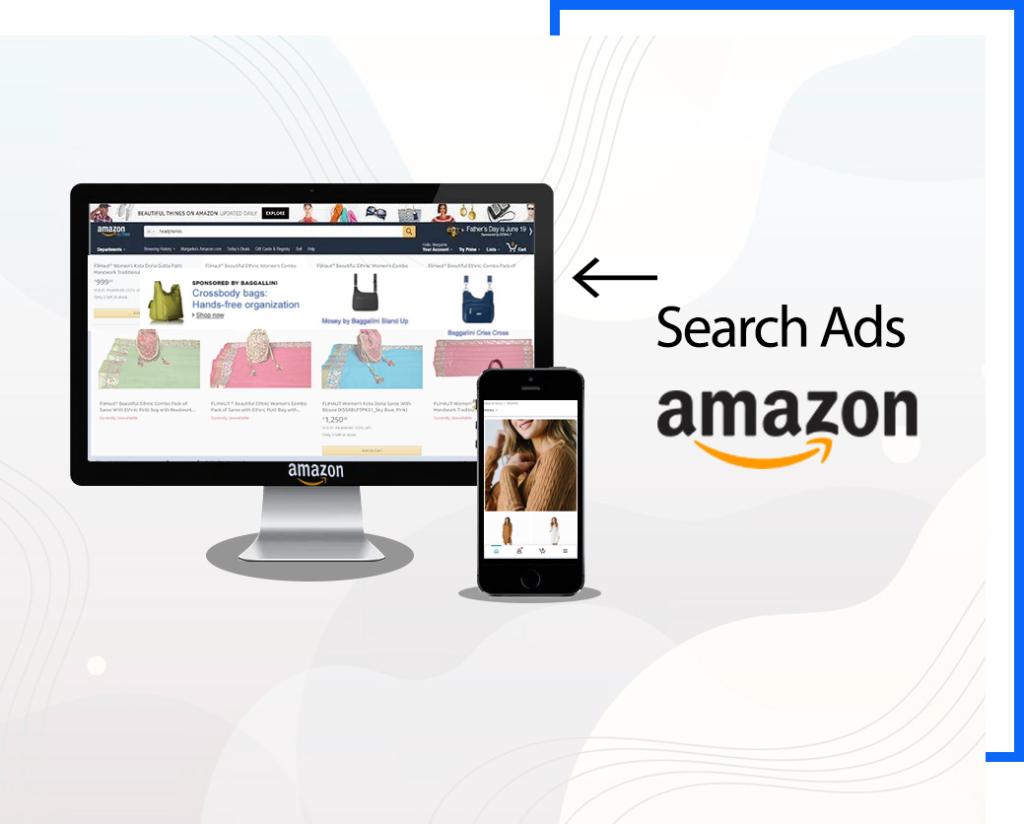
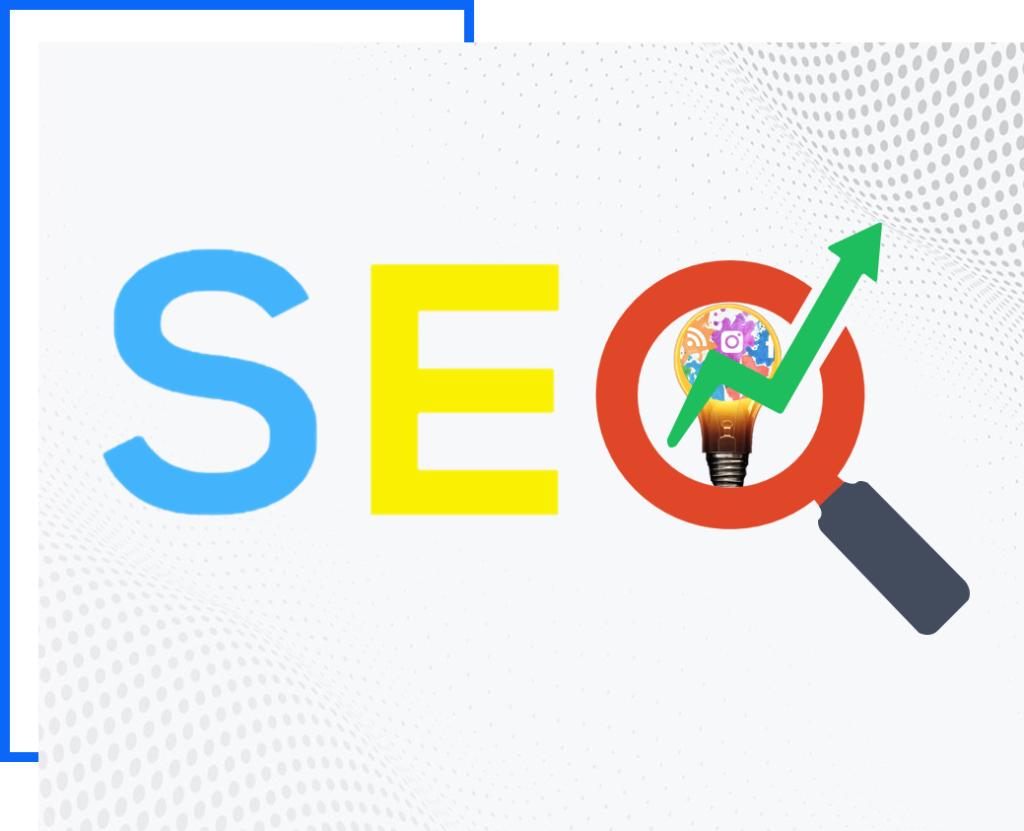
While searching for a product, customers type in certain keywords. These words are called Keywords. We should target these words in the product title to improve its visibility.
The product title should be of maximum 50 characters. It should contain all the relevant information like the product category, brand, color, size, material or key feature, packaging or quantity arranged in a fashion that places the most relevant keywords first.
All the elements of the product page together play a strong role in increasing the visibility.
● Product images – Customer wants to see the product before he buys. Hence images are important to choose one product over another. Adding multiple images of different angles gives the best possible representation of your product.
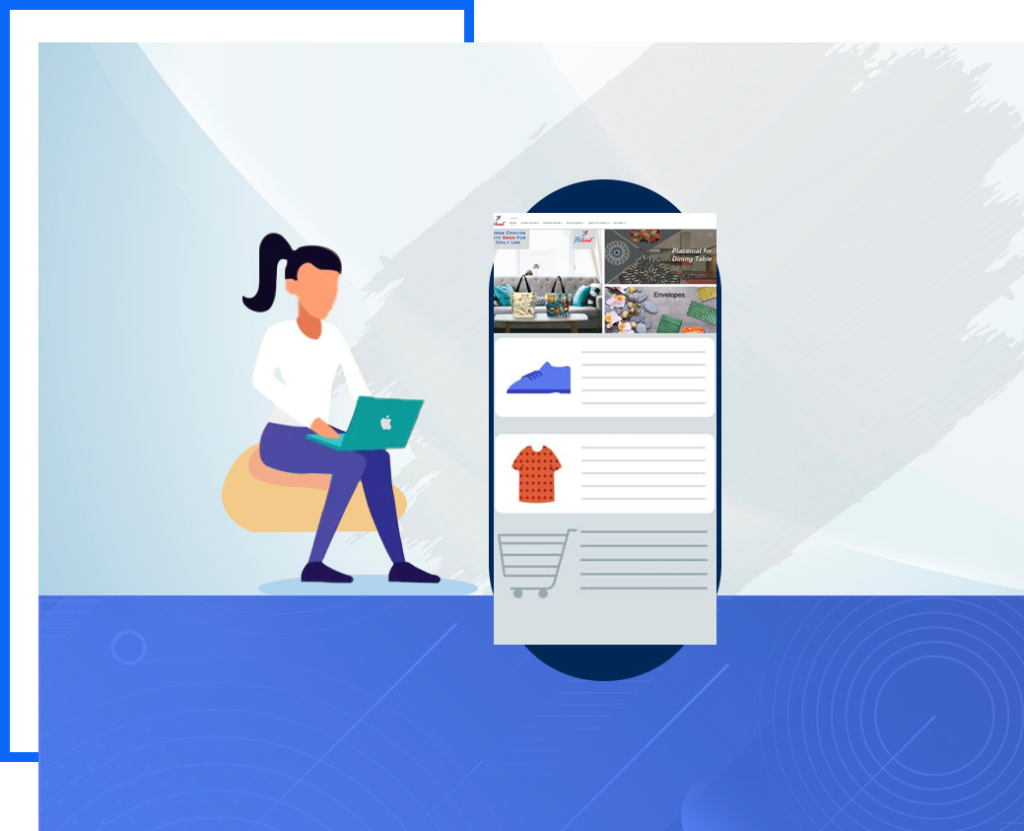

Customer reviews help in filtering out products. Positive reviews and a good seller reputation are important. Products with good ratings appear on top search results and more frequently.
We help you register for FBA and become a Prime seller to increase your chances of sales. Most customers have Prime membership and they look for Prime products. Prime ensures free and faster deliveries.
FBA (Fulfilment by Amazon) has become synonymous with great customer experience. It ensures safe delivery, easy returns, quick issue resolves, and more. Owing to its benefits Buyers may use the filter ‘Fulfilled by Amazon’, thus, increasing your chances of getting more visibility and sales.

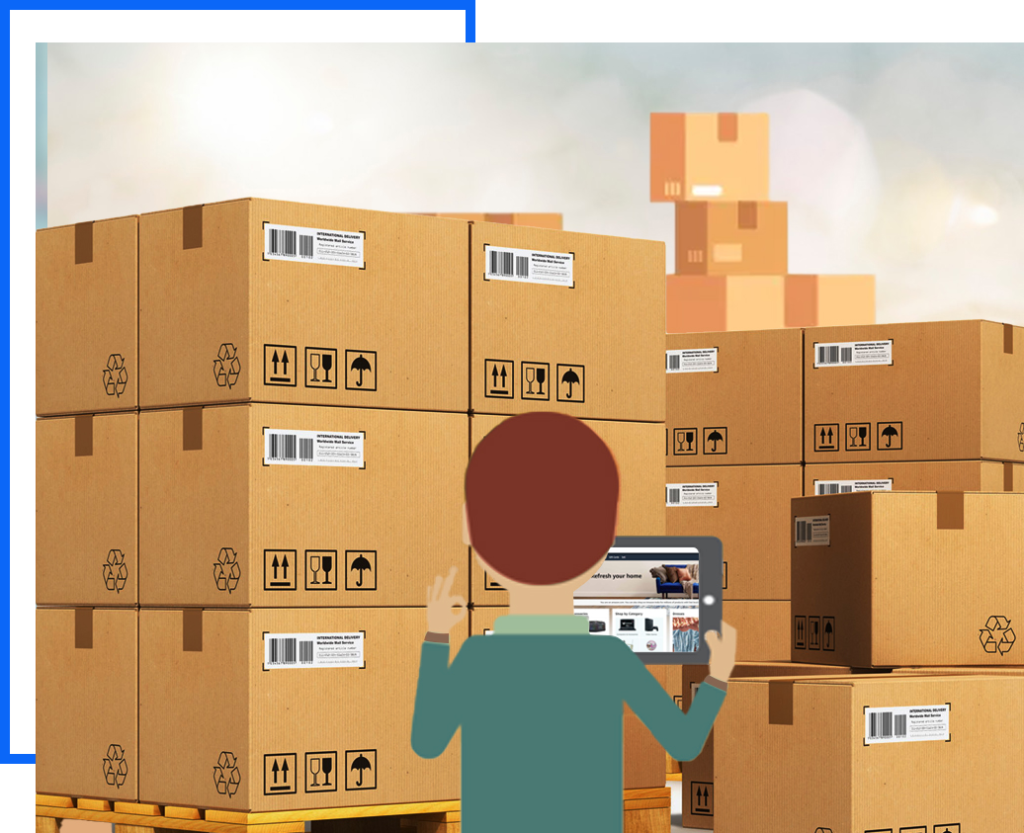
We make it a routine to track your inventory through your Seller Central account and guide you to replenish the stocks in time. Amazon shows only those products on top results that have sufficient stock. This means if your inventory is empty, people cannot find you easily. Which can result in major loss of sales by the time you replenish your inventory
We regularly check your prices with competition and suggest. Product price influences your conversions and sales. Customers may look for lower prices and the best deals so It is important to keep your price lower or equal to your competitors. Having a lower price also increases your chance to win the Buy Box, which significantly increases your chances of more sales.
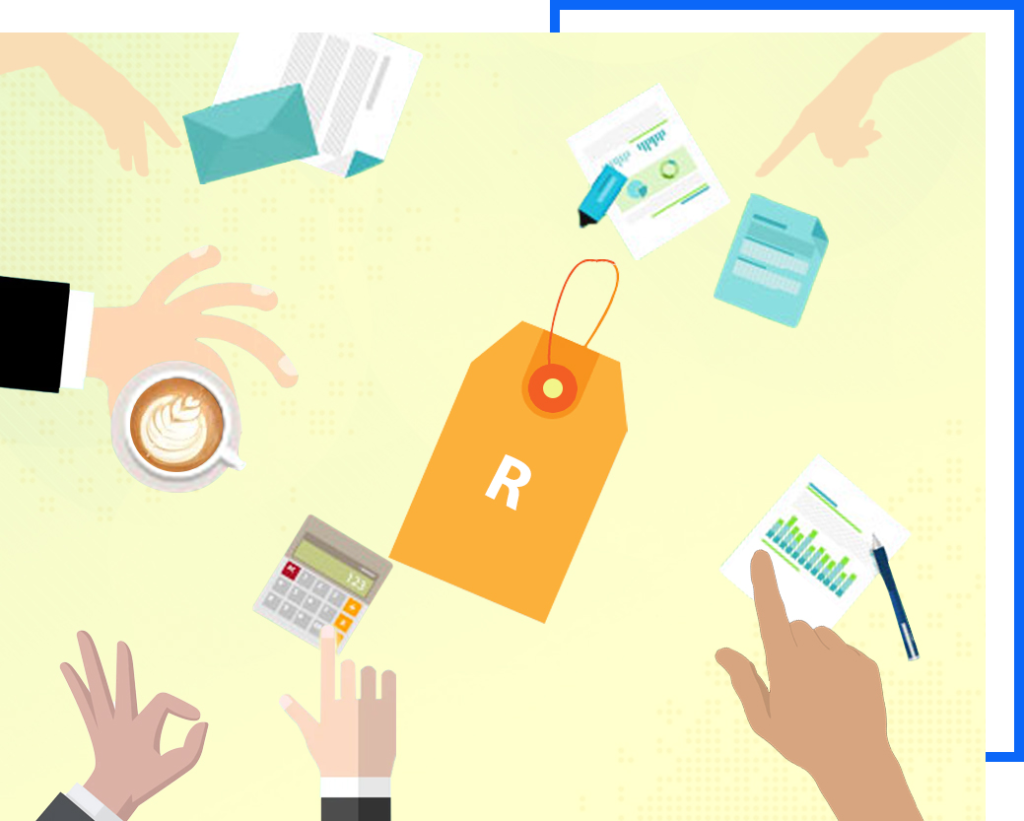
Taking part in Fulfilment by Amazon (FBA) is one of the easiest and quickest things you can do to increase conversion rates. It makes your products Prime-eligible, and having the Prime badge on your inventory makes it that much more appealing to buyers. They know they’re getting a high level of trust and security, and it’s far more often than not a tipping point in purchases.
However, independent or regardless of FBA, you should also be…
Optimising your product and brand content is a bit of a loaded tip, as going over everything that’s involved can easily cover several posts. But here are some pointers to keep in mind:
A/B testing means you compare two things that are exactly the same, except for one — and only one &major difference between the two. Perhaps you might A/B test which image to use as the main one, or which bullet point feature goes at the top of the list. Once you have the results of one change, keep it and work down a list of variables until you have a product page as close to perfect as possible.
Use Amazon repricing software to implement rules so that you can get into the Goldilocks zone as often as possible, maximising on conversions and profit margins at the same time. Just remember that too low can make buyers equate prices with cheap product quality and too high will turn buyers off, so try and find that sweet middle spot.
Some of the most common methods are up-selling, cross-selling and bundling when it comes to improving conversion rates. But a somewhat unique feature on Amazon is ‘frequently bought together’, which links products and shows the total price to buyers, as well as the option to add all the products to the cart.
When a prospective buyer asks a question about your product, answer it as soon as possible, taking no longer than 24 hours. And when they’ve made the purchase, send follow-up emails so that nothing falls through the cracks. You can also include a discount code for a second purchase — if the buyer does make that next purchase, you can be pretty certain they like what you’re about.
Chase after every single review like your business depends on it — in a way, it does. Online, you’re only as good as your reputation and the more buyers you can have to vouch for your quality of products and customer support, the more you’ll be able to capitalise on conversions in the future.
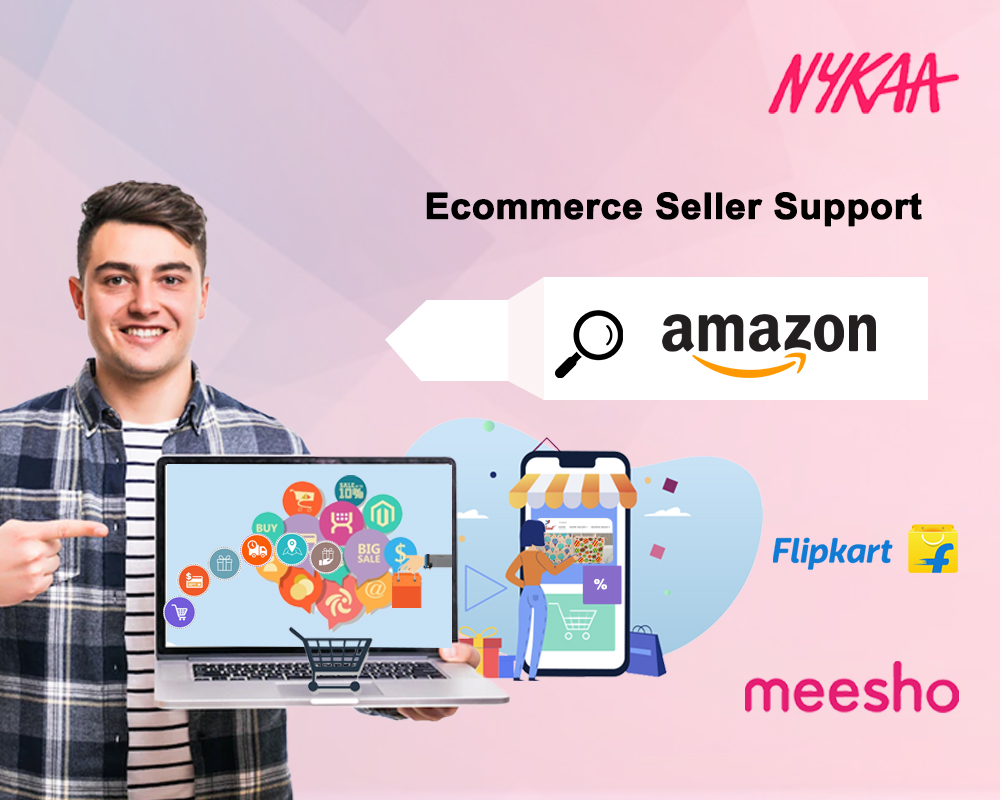
There is no single marketing strategy that works best for all sellers. It depends on what you want your result to be. Here are some popular strategies that have proven to boost sales
Your product listings need to create a good first impression on customers. The title of your product along with its images, description, and USP must appear to be top-notch. While introducing your product, keep concise titles with the brand and product name included along with its benefits. Focus on your keywords in the title to make sure they match with popular customer search terms.
The photography of your product images should be excellent while highlighting how the product can be used in reality. To make it more personal, use real pictures from customers who have bought the product to highlight authenticity.
List the features of your products in bullet points and don’t be redundant with the information that you put out. Your bullet points should answer all the FAQs and focus on the features and characteristics of the product. The goal is to get your customers to follow through to your detailed product description section from where you can be assured that they will make a purchase.
Use HTML markups in this section to avoid making information seem dull and provide extra insights on materials or ingredients used in your product. Address the not-so-obvious features to convince the customer that they need your unique product.
There are a variety of tools you can use to analyse the quality of your listing.
Search Engine Optimization is not just for Google. It is very crucial to the success of your Amazon marketing strategy as well because most people begin their searches for products on Amazon itself.
Are you facing problems with buyers not finding your products easily? This has everything to do with optimizing your product listings to include keywords that are most relevant to your products.
You can include up to 500 characters in your title. Amazon’s A9 algorithm filters listings to provide buyers with the most relevant results for the keywords they search. Therefore, your SEO strategy should enable your listings to be displayed on the first or within the first three pages of the search results. This way you can direct traffic to your product pages and increase sales.
Given how customer-centric Amazon is, feedback and reviews contribute largely to the success of your marketing efforts. Are you pondering over how to increase the conversion rate on Amazon with the help of feedback and review? It is because 97% of online shoppers buy products only after scanning through the reviews (source:ecomdash.com).
Normally, people do not make purchases of products that have low star ratings because it is a testament to the quality of the product. As a seller, you must request reviews from buyers and respond to those that are positive as well as negative. Thank customers for positive reviews and address the issues in case of negative ones.
It is the best way to show your buyers that you care, which in turn is a great strategy to boost sales.
A seller’s pricing strategy is very important and having the lowest price is not the only thing that matters in increasing sales conversion rate. While deciding on a price, you need to take into account all the costs – marketing, overhead expenses, other fees, that make up the final finished product.
You can then decide the lowest possible price that you can sell it at. Alternatively, if you want to sell it at a higher price than you can find similar niche products and their costs, to decide on an upper limit for your pricing plan. Thus, you will be able to keep up with the price competition. For a novice seller, it is advisable to first aim at selling products at reasonable prices and not at a high premium.
Limited-time deals on products are another effective way to increase sales. If you are a Professional Seller then you can create amazon lightning deals from your Deals Dashboard on your Seller account. It is the best way to market newly launched products and get the sales going.
Depending on whether you want to market your product as a premium one or as an economic, cost-effective one, research into pricing helps. This will also make it easier to choose the products that are worthy of promotion and give you good returns on sales.
Marketing strategies are often synonymous with advertising. Amazon has three categories of advertising-sponsored product ads, headline search ads, and product display ads.
The sponsored product ads are ideal for new sellers and for increasing your brand visibility as it takes one directly to the specific product being sold. This along with headline search ads are both keyword-targeted. They do not work out very expensive because they fall under the Amazon PPC campaign category.
The product display ads also follow the cost-per-click pricing method, but they are not keyword targeted. They are targeted towards interest and navigate buyers to a specific product details page.
Amazon has a variety of features for internal advertising. Amazon DSP (Demand-side Platform) is one such feature with which sellers can use audio and visuals as well for ads on Amazon. Sellers can benefit from DSP because it throws light on how they can improvise on their advertising strategies, thus leading to an increase in conversion rates. These types of ads usually contain links to landing pages which facilitates a wider reach of your target audience.
These marketing trends are on the rise and a seller can benefit from strategizing these two methods. A customer’s buying behaviour is easily influenced by what they see on social media which makes social media marketing a catalyst in increasing the sales of your products.
Sellers need to keep in mind that marketing people away from Amazon is a violation, so you need to always direct all your outside marketing efforts back towards Amazon. Your social media strategy should use captivating posts to build your brand image along with communicating updates, discounts, and sales. All this should ultimately tie back your product’s page on Amazon.
Amazon’s affiliate marketing program is called Amazon Associates. It is a program whereby affiliate marketers make money by advertising products on their blogs, vlogs, websites, or anywhere on their social media. They earn a commission every time somebody purchases through an affiliate link provided by them.
Affiliate marketing thus acts as a win-win situation for both sellers and affiliate marketers alike. Since they bear the burden of marketing, it gives way to a seller to focus on other factors while also ensuring a steady stream of traffic to his products that lead to conversions.
Sellers can use A+ content to enhance their marketing efforts with top-notch content. You can use A+ or Premium A+ content depending on what kind of seller you are and if you are willing to pay. You can draw attention to the comparison of the product with others in the same niche and draw attention. It is the most effective way to visually present your products’ uniqueness.
Recommended Guide: Amazon EBC.
The reports on Amazon search terms, demographic reports, alternate and repeat purchase behaviour reports are great tools to channel your marketing strategies since they help you make use of all the opportunities to increase sales and make improvements across your brand.
It is easy to get carried away with innovative marketing strategies, but it helps to always keep in mind the rules and terms of service by Amazon because if you violate them, you risk your account being shut down or suspended. Keeping the guidelines in mind is crucial to high-quality listings which boost your chances of converting more sales.
A comprehensive marketing strategy that has a combination of all the above factors can help you advance and reap good benefits. As a seller, you will have to constantly update yourself with new marketing trends to deploy and ensure that you have a steady increase in sales.
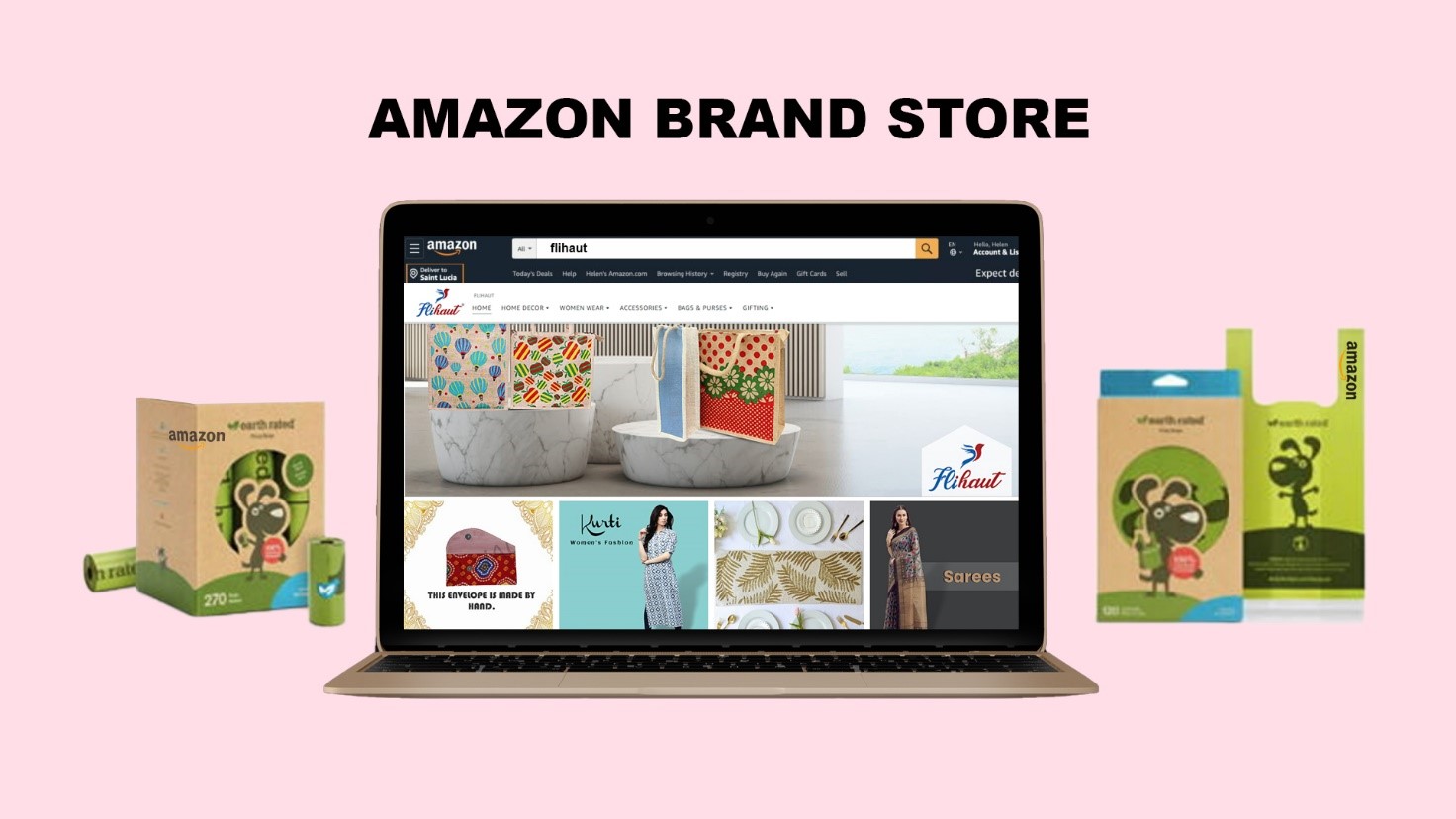
Curated brand destination
Your Amazon Store educates your customers about your brand while showcasing your best-selling products. Instead of having to search for each one of your products individually, shoppers can explore your entire product portfolio in your Store. You’ll also have your own custom “Amazon.com” URL.
No competitor ads
One of the biggest benefits of having an Amazon Store is the freedom from competitor ads. Sponsored Products and Sponsored Brands ads create a lot of distractions on Amazon search results pages and even on product listings. But on your Store, customers will only see your brand.
Get creative
You have the opportunity to flex your marketing creativity with great images, infographics, or even videos for your products. We all know how important your main product images and A+ content are — now, you’ll have even more space to completely customize the look and feel of your brand.
Drive traffic directly to your Storefront
With Sponsored Brands or Sponsored Display Ads, you can drive traffic directly to your Amazon Store. This allows you to funnel customers away from your competitor’s products. You can also use your own social media accounts or email marketing to send traffic to your Store.
Customers can also find your Store by clicking “Visit the [BRAND NAME] Store” underneath a listing’s title.
Add multiple pages and subcategories
If your brand includes multiple subcategories of products, you can create subpages to host them. For example, if you sell a range of kitchen appliances, you can set up pages for coffee machines, toaster ovens, air fryers, and other groups of items.
Store insights dashboard
The dashboard allows you to find out where your Store traffic is coming from, see how well your Store is driving sales, monitor page views, and more. These KPIs allow you to make accurate decisions about how you market your products and Store.
Amazon Business reports offer data for sellers to focus on the key aspects of their businesses. You can find the Business reports located under the main tab > Reports section within your Seller Central account.
Not all data present in the reports are helpful. There are a few important ones that you should know. Few of the reports offered in the Seller Central are accessible to all sellers, while a few are open only to FBA sellers, and some are accessible to the brand-registered sellers.
Amazon sellers who fulfil their orders can find the business reports under the Reports tab. You can also find sales and tax reports as well. These reports can offer long-term insights that you can use to scale your advertising and sales.
The data in the Seller Central is right at your fingertips. It gives information on how your customers interact with your products and how often they buy your products. Along with that, you can also get insights into the quantities that customers order in a single transaction. This data is valuable to grow your Amazon business.
Amazon offers you three types of Business reports.
Sales Dashboard – It offers a quick snapshot of your orders and sales. These reports also come with a couple of trend graphs to help you compare data across the previous day, week, and year-wise performance. Analyzing this report is the quickest way to understand your historical sales, units sold, and average order value.
Sales & Traffic – This report gives an average level of sales data shown at custom date range, monthly, weekly, or daily.
Detail Page Sales and Traffic by ASIN – This report shows both parent-level and child-level ASIN data. You get a detailed performance report at the product level. You can find granular level data for product reporting for a customized date range.
Despite multiple reports available, there are specific metrics that you should track to improve your Amazon business. Here is the list:
It shows the total number of products that your customers ordered. You can use this metric to keep an eye on the peaks and troughs in your unit orders.
The unit volume directly influences your product ranks on Amazon. If you sell more units, you rank higher on amazon the search results. Therefore, you need to track this metric and assess if the volume of units ordered performs well.
It is the price of the item multiplied by the total number of units ordered. You get the total sales figure. Here, gross product sales include your product sales plus additional costs such as the shipping costs, gift wraps costs, etc. In short, it is the price the customer spent to get the product, not just the price of the product.
What can you do with this metric?
With this metric, you can track total product sales both with and without additional costs. So you will get both net and gross sales figures to understand. This helps you precisely understand the profits you make.
As an Amazon seller, you might be aware that revenue is one of the major factors influencing your product ranking. Therefore, align your total sales with units sold, page views, and sessions to get a clear picture of your business performance on Amazon.
Pageviews show the number of visits that your Amazon store gets. Amazon considers each page of your store separately. So if a customer views more than a single page, it will be regarded as individual page views.
What you can do with this data:
Observe the page views and analyze if the views are increasing or decreasing. Then, make the necessary changes to solve the issues, if any.
If page views are less, it simply means that your products are not visible to the audience. So you need to analyze why you cannot garner views. First, see if you are winning the Buy Box. Along with that, see if your product titles have relevant high-volume keywords and images that work well. In general, more traffic means better conversions, which in turn leads to better rankings. So make sure you keep an eye on this metric.
This metric simply denotes the traffic tracked. It’s as simple as that.
If you have a basic understanding of SEO or website analytics, you would have come across this metric. A session is a set of user interactions within a specific time frame. The same applies to Amazon. When a customer enters your Amazon store, views multiple pages, interacts with different pages, it is considered one session. However, the session expires after a certain period of inactivity.
Let’s say a customer views your Amazon store page.
Each of these cases could be different. One single user can interact with your product and Amazon store in multiple ways. These different ways can be considered page views. However, they all come under one single session.
This is how you can use the sessions metric:
In general, the page views would be more than the session. However, if they are equal, it shows that the products do not hold your shoppers’ interest. It means that they are looking at one specific product and left the store after that.
If this happens and not many are interested in your products, it’s time to evaluate the possible reasons. You cannot expect much conversion rate in this case. Observe if the product listing has fewer sessions per month.
Here are a few things you can consider:
Use this opportunity to make necessary improvements to your products and grow your page views and sessions.
This metric compares the number of orders placed and the number of unique sessions your store got from the customers.
Let’s say you have 50 customers visiting your Amazon store, and 25 of them placed orders with you. In this case, your order session percentage is 50% (25 divided by 50). If five customers visited the store and four placed orders, the order session percentage was 80% (4 divided by 5). That’s how it works!
How to interpret this data
If you notice a drop in your order session rate, or your order session rate is lower than the category average, you need to take proactive steps to fix the issue. The chances are high that your product ranking is low. Most of the time, you will have to find the right keywords for your listing.
Use SellerApp’s keyword tools to find potential keywords for your listing. Not sure about the right keywords? Find out the keywords that your competitors are ranking for. Target them in your listings and advertising campaigns to improve your ranking and sales.
Coming back to the order session percentage, once you look at the data, you will discover the products that are most and least successful. A good conversion rate on Amazon can be anywhere from 10-15%. So you need to aim to achieve the average 9.7% conversion rate. However, these numbers may vary slightly with the industry in which you are selling.
The Buy Box percentage tells how often your product appeared in the Buy Box to the customers.
If the Buy Box percentage is high, it means that you are winning the Buy Box frequently. This is a good sign, and it improves your sales and rankings. However, if your product is out of stock or loses the Buy Box to another seller, it impacts your sales and page views.
How to improve the Buy Box percentage
If the Buy Box percentage is low, check if the product is out of stock or you lost the Buy Box to a competitor. There are also certain factors such as price, customer service, shipping, etc. that influence the chances to win the Buy Box. So make sure you are optimizing and tweaking them to keep the Buy Box.
Amazon Business reports have invaluable data and insightful information that can help you expand your business. Along with that, we, at SellerApp offer business reports for Amazon sellers who want to expand their business reach.
One of the biggest challenges that businesses face is that they don’t have sufficient data to estimate the product demand in the marketplace. Reports using Amazon customer demand signals to offer personalized product recommendations. This way, you get insights into Amazon Business customers’ demand within your product category. In addition, you will get an idea of what B2B customers are likely to buy on Amazon.
Business customers tend to prefer sellers who offer them personalization and choice. You can use Seller App’s Business reports:
Images/We-Are-The-Perfect-Choice-For-E-Commerce-Sellers (1).png
